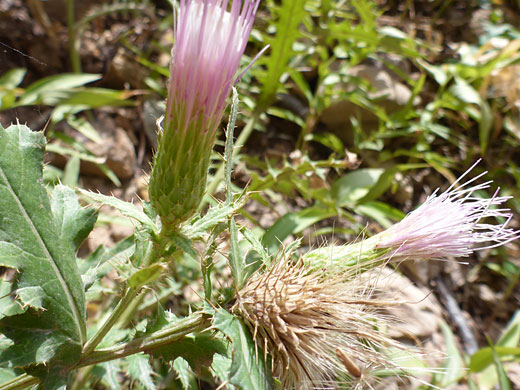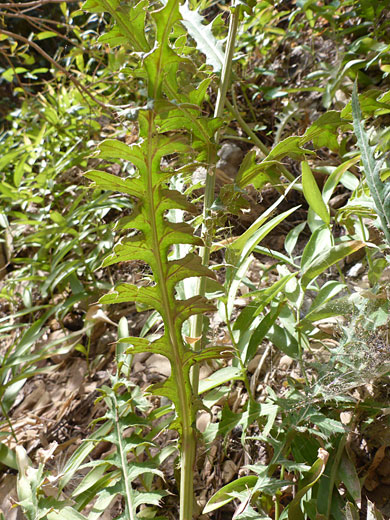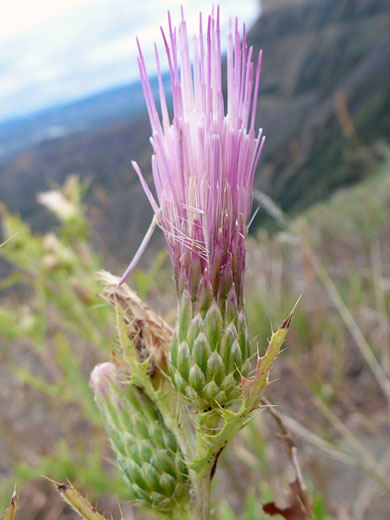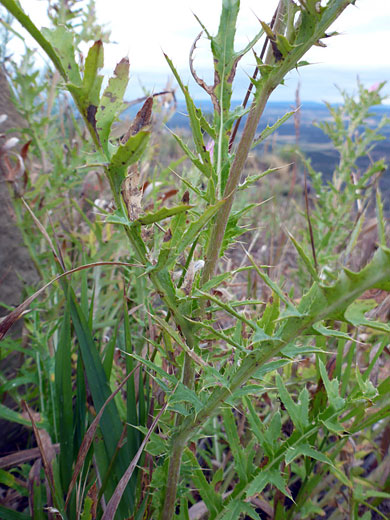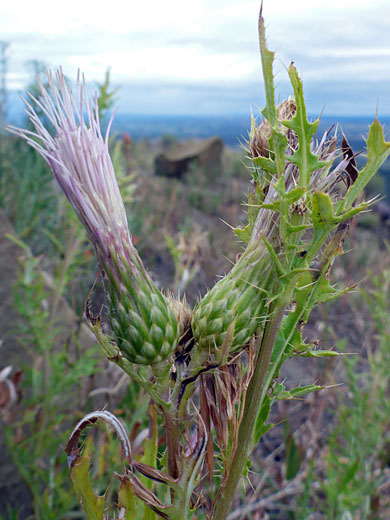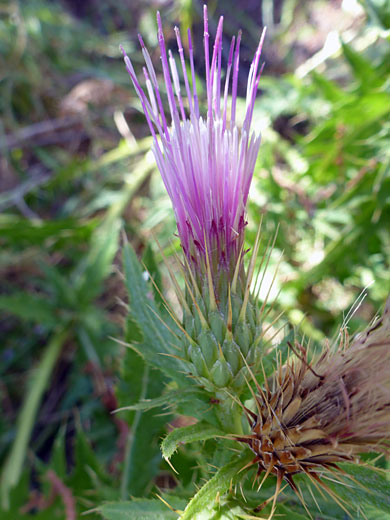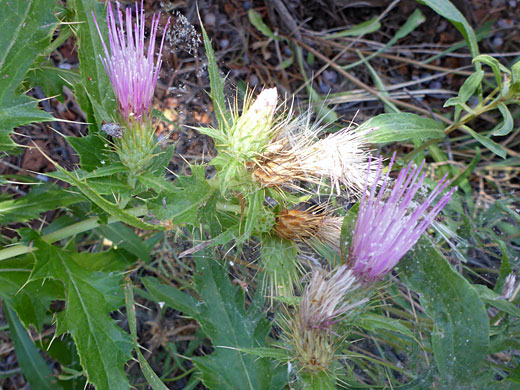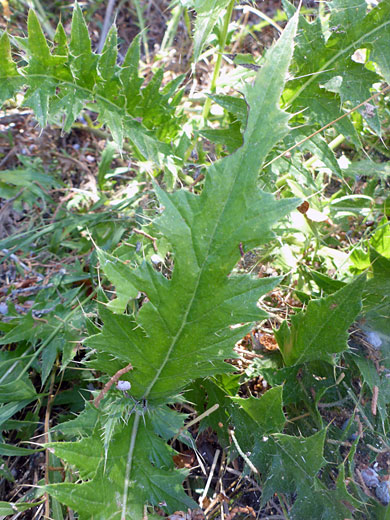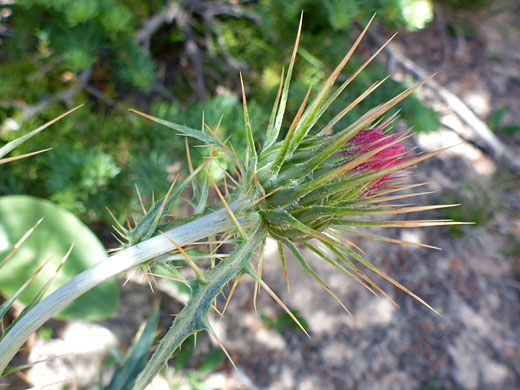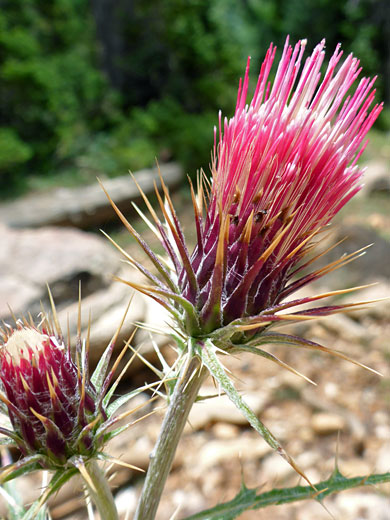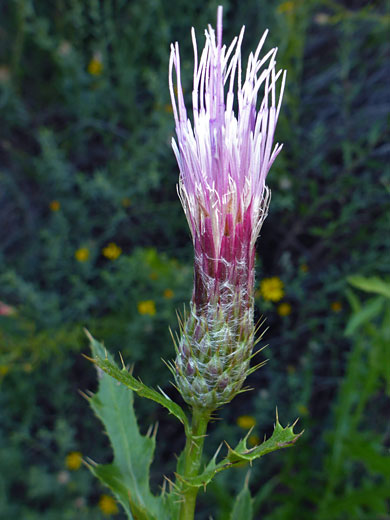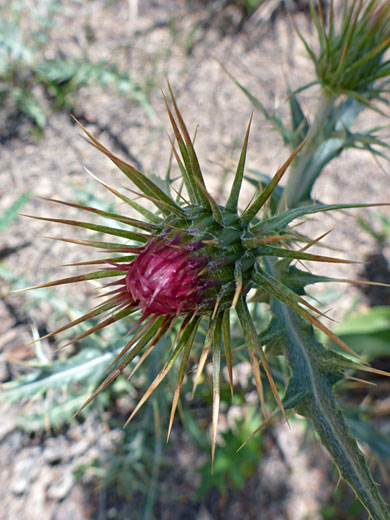
Florets and phyllaries of cirsium arizonicum var bipinnatum - Echo Canyon Trail, Colorado National Monument, Colorado
Common name:
Arizona thistle
Family:
Scientific name:
Cirsium arizonicum
Main flower color:
Range:
The Four Corners states, south Nevada and southeast California
Height:
Up to 5 feet
Habitat:
Rocky hillsides, grassland, canyons, woodland; 3,000 to 11,800 feet
Leaves:
Up to 15 inches long and 5 inches wide; shallowly to deeply lobed, one or two times; hairy or hairless
Season:
June to October
Cirsium arizonicum is distinguished by its relatively long but slender involucre, cylindrical or narrowly bell-shaped, and by the long corolla lobes of its disc florets - they are about 1.5 times as long as the corolla tube. Florets often remain approximately parallel, forming a narrow flowerhead, rather than adopting the spreading form of many other thistle species.
Plants may produce a single flowerhead or more than 100, in flat-topped or elongated clusters. Flowerheads are attached by stalks of up to 5 inches. Phyllaries are arranged in 7 to 9 rows; those at the base of the involucre are short, ovate or lanceolate in shape, while those at the top are longer, and linear. Phyllaries have a short spine at the top. Florets may be pink, purple, red or (least often) white; they are around one inch long.
The stout, reddish-green stems are often completely hairless but can have a covering of fine, cobwebby hairs. Leaves are variable, in shape and hairiness. They may be unlobed, shallowly lobed or deeply divided, while the lobes may be further divided. Lobes are linear to ovate in shape, and spine-tipped. Surfaces may be hairless, or sparsely to densely covered by short, greyish hairs.
Five varieties of cirsium arizonicum are currently recognized, differentiated primarily by leaf hairiness and spination; two (var rothrockii, var arizonicum) have reddish corollas while the other three (var chellyense, var bipinnatum, var tenuisectum) have pink to purple corollas.
Plants may produce a single flowerhead or more than 100, in flat-topped or elongated clusters. Flowerheads are attached by stalks of up to 5 inches. Phyllaries are arranged in 7 to 9 rows; those at the base of the involucre are short, ovate or lanceolate in shape, while those at the top are longer, and linear. Phyllaries have a short spine at the top. Florets may be pink, purple, red or (least often) white; they are around one inch long.
The stout, reddish-green stems are often completely hairless but can have a covering of fine, cobwebby hairs. Leaves are variable, in shape and hairiness. They may be unlobed, shallowly lobed or deeply divided, while the lobes may be further divided. Lobes are linear to ovate in shape, and spine-tipped. Surfaces may be hairless, or sparsely to densely covered by short, greyish hairs.
Five varieties of cirsium arizonicum are currently recognized, differentiated primarily by leaf hairiness and spination; two (var rothrockii, var arizonicum) have reddish corollas while the other three (var chellyense, var bipinnatum, var tenuisectum) have pink to purple corollas.
All Contents © Copyright The American Southwest | Comments and Questions | Contribute | Site Map

